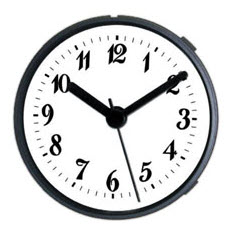
Clockmaking with Private Clock Hands and also Dials
Clock dials and also hands function as a team in drawing out design and also tone, and also they aid the onlooker to get the moment quickly so long as they are contrasting as well as well matched. In this short article we check out just how to attain a well-matched and different collection, and also just how to finest depict your desired look. Clock hands and dials are actually the focal point, and it is not unusual that clockmakers devote their initiatives to combine them strikingly.
This is not to downplay the duty of the clock motion in correctly positioning the turn over the face constantly. But the activity is pure function and remains unseen; style (kind) should be highlighted via the visual components. Structure clocks from square one requires selecting your own components, and also you should pursue a combined, harmonious appearance. The hands and also dial are the all-natural emphasis, but the general capability of the watch has to be figured out first. Consisting of certain attributes or uniqueness might have an impact on one or both of these component parts. There is a terrific range of clock motions available, each with a certain combination of functions. The crucial feature is timekeeping, meaning showing the current time continually to whatever extent preferred.
That is, though one of the most typical cycle is twelve hrs (when every little thing go back to its starting state), some activities expand the cycle to something much longer, potentially requiring a various looking dial and possibly requiring an additional hand. For instance, you can get a 24-hour motion, cycling once daily as opposed to twice. The matching dial will certainly reveal an added lots numbers, either doubling up with the very first lots or expanded over the area; the latter style is unavailable with the exception of big clocks. One motion turns the hr hand two times a day, the various other once daily. Longer cycles are the week and also the month. These movements require adjusted dials that show the days of the week or dates in the month, respectively.
An extra hand indicate the matching day or day. Still various other motions use monitoring tide degree (for those in seaside setups) or reporting weather condition phenomena such as temperature and also humidity. The dials and also hands for these are specially developed to collaborate with them, and might be similar to the circular format or may entail a solitary hand going back and forth over a limited range. As soon as your clock movement is chosen, you can transform your focus to the hands as well as dials, concentrating on sizes and styles.
Dial as well as hand sizes need to match, obviously, and also their designs must be corresponding. Supplying consist of a range of forms and shades, and also dial text is available in Arabic or Roman (or symbols). Dial size dimensions range from a few inches to possibly six feet (with significant clocks mounted straight on a wall surface rather than looking for huge adequate instances). Once you exceed around 14 inches, the minute hand becomes also hefty for a normal motion to revolve. In such situations buy a "high-torque" version of the exact same motor you have actually chosen, and it ought to carry out properly. diy clock hands
Provide some thought to whether you desire your clock to have a second hand, and if so, whether you prefer the normal tick-and-stop (distinct) action or a constant, quiet sweep activity. The motor needs to sustain one activity or the various other, and you can choose simply not to mount the used if it seems nonessential. As soon as you understand the fundamentals of structure wrist watches from parts, you might wish to check out various other facets such as sounding chimes or duplicating older clocks with oscillating pendulums. But basic clockmaking starts with specific clock hands and dials.